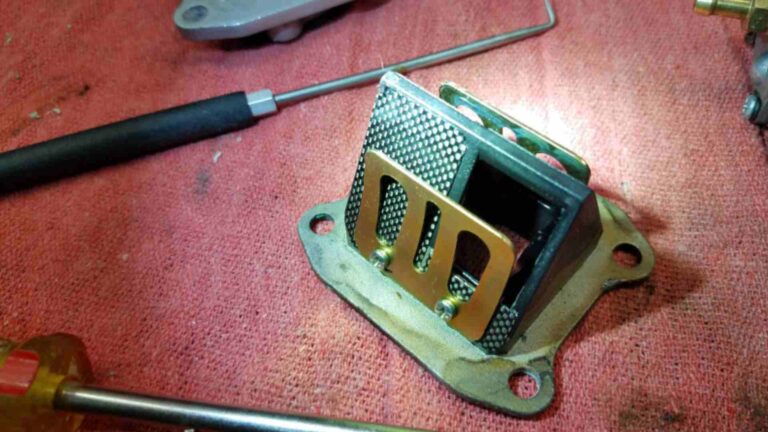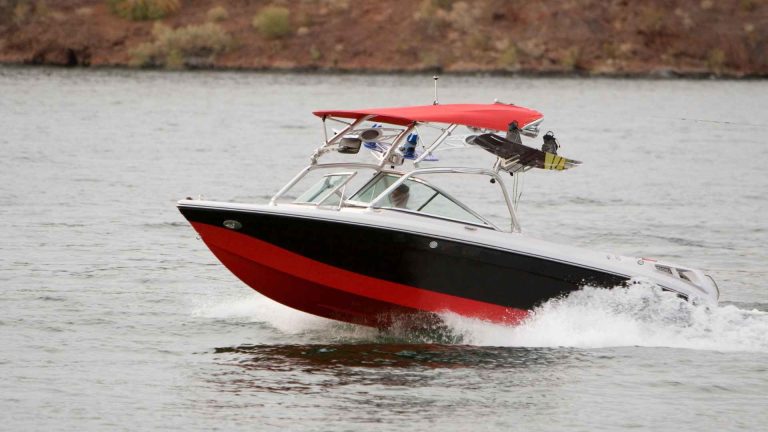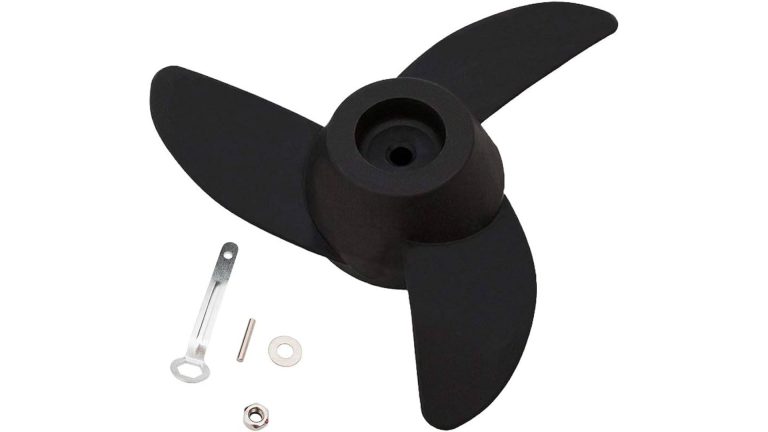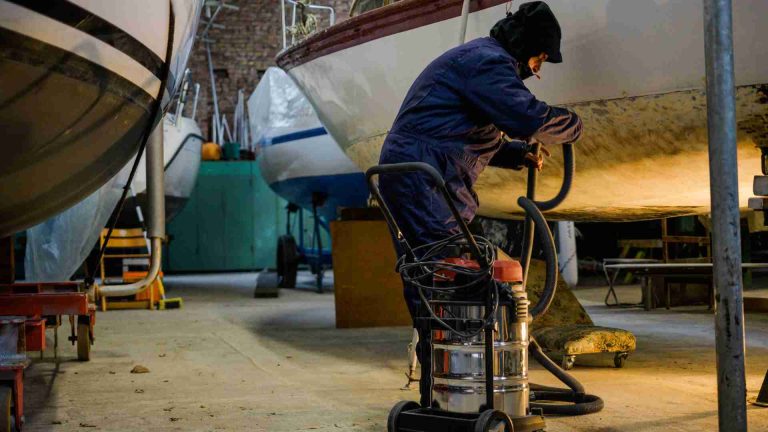The Evolution of Boats Over Time: A Journey Through History
Introduction to the topic
“From the humble rafts of ancient civilizations to the magnificent ships that sail the oceans today, boats have been an integral part of human existence, shaping our exploration, trade, and cultural development. Imagine a world without boats, and you’ll find a world where boundaries remain unexplored and opportunities unrealized.”
Boats have played a crucial role in the development of human civilization since time immemorial. They have served as vehicles for transportation, tools for exploration, and platforms for cultural exchange. The history of boats spans thousands of years, reflecting our innate curiosity and desire to conquer the vast expanses of water that cover our planet.
This article will take you on a fascinating journey through the evolution of boats, highlighting key milestones and their impact on various aspects of human life. From the early watercraft used by ancient civilizations to the advanced vessels of the modern era, we will explore how boats have shaped our history, facilitated trade and communication, and provided the means for great discoveries and adventures.
The Origins of Boats
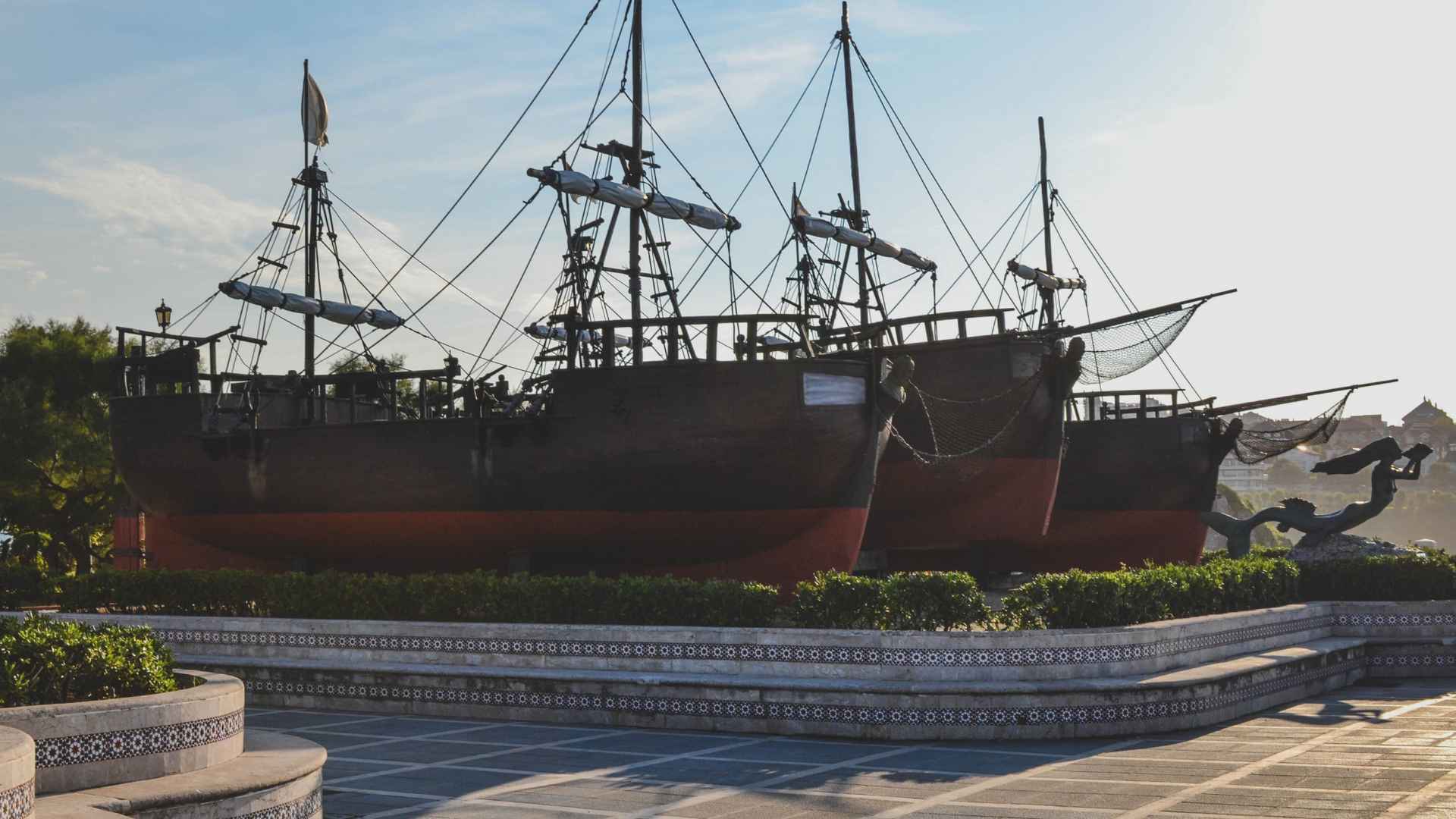
Boats, in their simplest form, can be traced back to prehistoric times when humans first recognized the potential of floating objects. These early watercrafts were rudimentary, often crafted from hollowed-out logs or bundles of reeds.
Prehistoric watercraft: primitive boats made from hollowed-out logs or bundles of reeds.
Prehistoric watercrafts serve as a testament to human ingenuity and resourcefulness in utilizing the materials available to them. These early examples of primitive boats were often constructed from hollowed-out logs or bundles of reeds, reflecting the fundamental desire of our ancestors to explore bodies of water and overcome the challenges they presented.
1. Hollowed-out logs
One of the earliest forms of watercraft can be traced back to the use of hollowed-out logs. In this method, a large tree trunk was carefully hollowed, either by burning or using stone tools, to create a boat-like structure. This simple yet effective design provided buoyancy and stability, allowing early humans to venture into lakes, rivers, and other bodies of water.
Hollowed-out log boats were primarily used for fishing and transportation purposes. They enabled humans to access resources that were otherwise difficult to reach, expanding their territories and facilitating trade between different communities. These early boats laid the foundation for future advancements in watercraft design.
2. Bundles of reeds
In areas where logs were scarce, such as marshlands or regions with abundant reed growth, our ancestors developed alternative techniques using bundles of reeds. These boats, often referred to as coracles or reed boats, were created by tying bundles of reeds together to form a buoyant structure.
The construction of reed boats varied across different regions and cultures. For example, in ancient Mesopotamia, bundles of reeds were lashed together to create guffas, lightweight boats used for river transportation. Similarly, the ancient Egyptians used bundled papyrus reeds to construct small boats known as skiffs or “papyrus boats.”
Reed boats were particularly suited for navigating shallow waters, such as marshes or calm river systems. They provided early humans with the means to fish, hunt waterfowl, and gather resources from wetland environments. These boats were often lightweight, portable, and easily repairable, making them practical for the needs of early societies.
Both hollowed-out log boats and reed boats demonstrated the initial steps humans took in harnessing the power of water transportation. These primitive watercrafts allowed our ancestors to explore, trade, and interact with their surroundings in ways that were previously inaccessible. As civilizations developed and technology progressed, these early examples paved the way for more sophisticated boat designs and propelled humanity further along the path of maritime exploration and discovery.
Early river civilizations: development of boats by ancient river civilizations
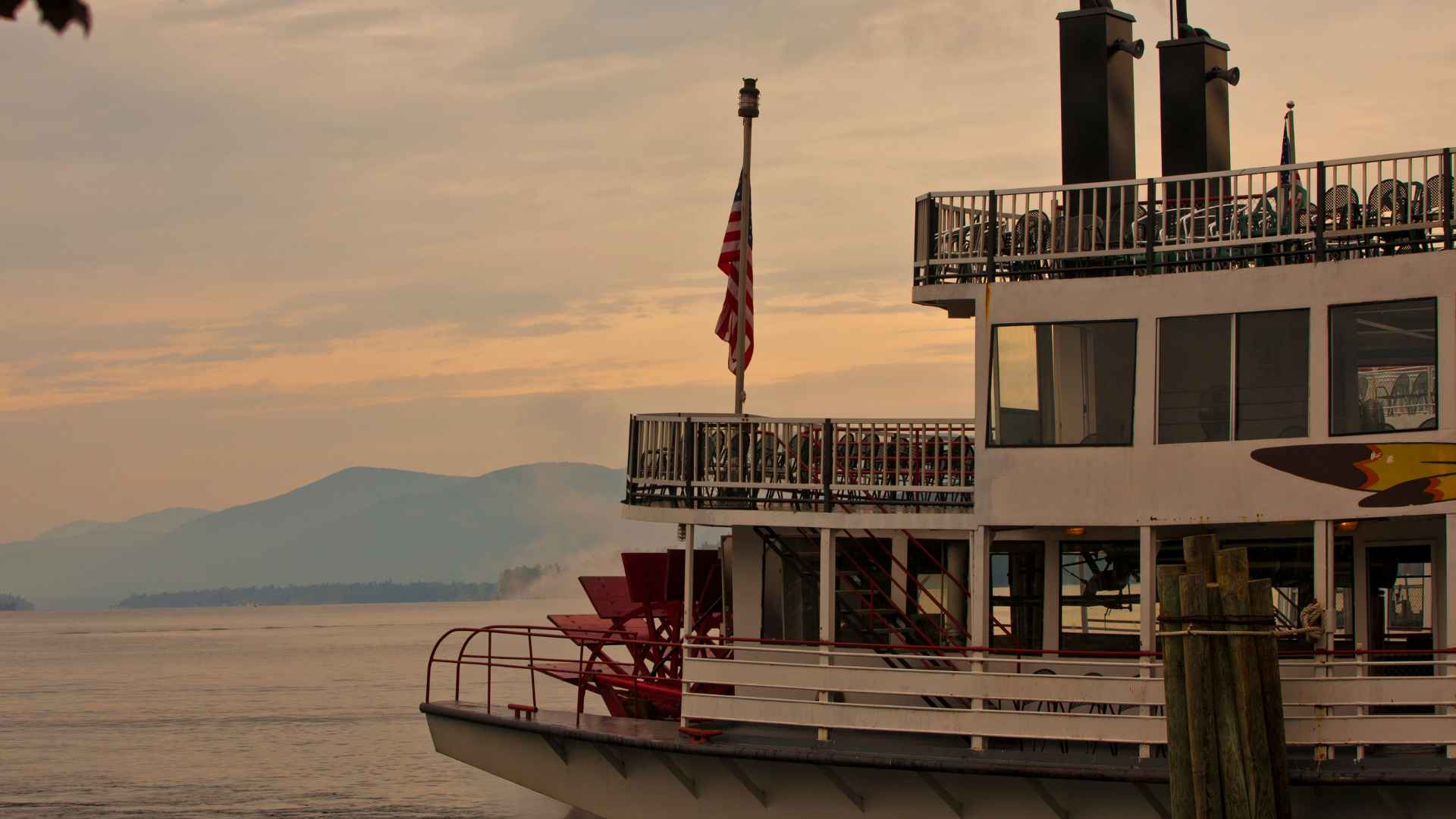
The development of boats by ancient river civilizations, such as the Egyptians and Mesopotamians, marked a significant advancement in maritime technology and played a crucial role in shaping their societies. These civilizations recognized the value of rivers as lifelines for transportation, trade, and cultural exchange, leading to remarkable innovations in boat design and construction.
1. Ancient Egypt
The Egyptians, with their close proximity to the Nile River, developed an intricate understanding of boat construction and navigation. Boats played a vital role in the economic, religious, and cultural life of ancient Egypt. The Egyptians built various types of boats tailored to different purposes. The most famous of these were the “solar boats” associated with religious rituals and the afterlife.
These boats were built using planks and were often buried alongside pharaohs in their tombs. The Khufu Solar Boat, discovered near the Great Pyramid of Giza, is a remarkable example of ancient Egyptian boat craftsmanship. For trade and transportation, the Egyptians used riverboats known as “kedjet,” which were constructed using wooden planks and equipped with sails.
These boats allowed the Egyptians to navigate the Nile River, facilitating the movement of goods, people, and military expeditions between different regions of their empire. They were also used in fishing and hunting.
2. Mesopotamia
The ancient civilizations of Mesopotamia, located between the Tigris and Euphrates rivers, also made significant contributions to boat development. The availability of these rivers fostered the growth of advanced irrigation systems and facilitated the transportation of goods. In Mesopotamia, boats made from bundles of reeds tied together, called “guffas,” were commonly used.
These lightweight vessels were well-suited for navigating the shallow waters of the Euphrates and Tigris rivers. Guffas allowed the Mesopotamians to transport people, goods, and livestock, connecting cities and fostering trade networks.
The Mesopotamians also developed larger sailing ships for long-distance trade in the Persian Gulf and beyond. These ships, known as “biremes” or “triremes,” had multiple rows of oars and were capable of carrying substantial cargo. They played a crucial role in expanding Mesopotamian influence and facilitating cultural exchange with other civilizations in the region.
The boat designs of both ancient Egypt and Mesopotamia were products of their respective environments, resources, and societal needs. These river civilizations relied on boats for transportation, trade, agriculture, and defense, contributing to the development of sophisticated shipbuilding techniques and navigational knowledge.
The advancements made by these ancient river civilizations laid the foundation for future maritime exploration and trade. The knowledge and technologies developed during this period would be further refined and disseminated to other cultures, shaping the evolution of boats in the centuries to come.
Navigating the open seas: advancements in boat design and construction that allowed early seafaring civilizations to explore and trade across vast distances.
The advancements in boat design and construction during the era of early seafaring civilizations revolutionized their ability to navigate the open seas and undertake long-distance exploration and trade. These advancements opened up new horizons, connecting distant lands and cultures and paving the way for significant historical developments.
1. Phoenicians
The Phoenicians, a maritime civilization flourishing in the eastern Mediterranean from the 12th to the 6th centuries BCE, played a crucial role in pushing the boundaries of seafaring. They were renowned for their shipbuilding skills and navigation prowess, which allowed them to explore and establish extensive trade networks.
Phoenician shipbuilders developed sturdy wooden ships known as “galleys” or “biremes.” These vessels had multiple rows of oars and were propelled by both oarsmen and sails. They were constructed using a combination of wooden planks and strong ropes, demonstrating a sophisticated understanding of shipbuilding techniques.
The Phoenicians utilized their advanced boats to navigate the Mediterranean Sea and establish trade routes connecting different civilizations. They traded goods such as textiles, metalwork, and agricultural products, contributing to the cultural exchange and economic prosperity of the regions they visited.
2. Polynesians
In the Pacific Ocean, the Polynesians demonstrated remarkable achievements in seafaring and boat design. They developed exceptional double-hulled canoes, known as “wa’a,” capable of withstanding long-distance voyages.
Polynesian boat construction incorporated sturdy wooden frames and hulls made from a combination of planks and natural fibers. These canoes were equipped with sails made from woven palm leaves or other locally available materials. The design of the double hulls provided stability and increased carrying capacity, enabling the Polynesians to undertake extended journeys across vast expanses of the Pacific.
Through their exceptional navigation techniques, which relied on celestial observations, knowledge of ocean currents, and bird migrations, the Polynesians explored and settled numerous islands across the Pacific. This seafaring culture played a vital role in the dispersal of people, trade, and the exchange of ideas throughout the Pacific region.
3. Ancient Greeks
The ancient Greeks also made notable advancements in ship design, particularly during the Classical period. They developed triremes, ancient warships propelled by multiple rows of oars. These vessels had a sleek design, with a ram at the prow for naval warfare.
Greek shipbuilders refined their construction techniques, employing a combination of wooden planks, internal bracing, and strategic use of sails. These innovations allowed Greek ships to achieve impressive speeds and manoeuvrability, enhancing their naval dominance in the Mediterranean and facilitating trade and colonization efforts.
The advancements in boat design and construction during the era of early seafaring civilizations transformed the possibilities of maritime exploration and trade. These advancements led to the establishment of trade routes, cultural exchanges, and the dissemination of knowledge across vast distances, shaping the course of history and laying the foundation for future maritime developments.
Innovations and Ancient Maritime Cultures:
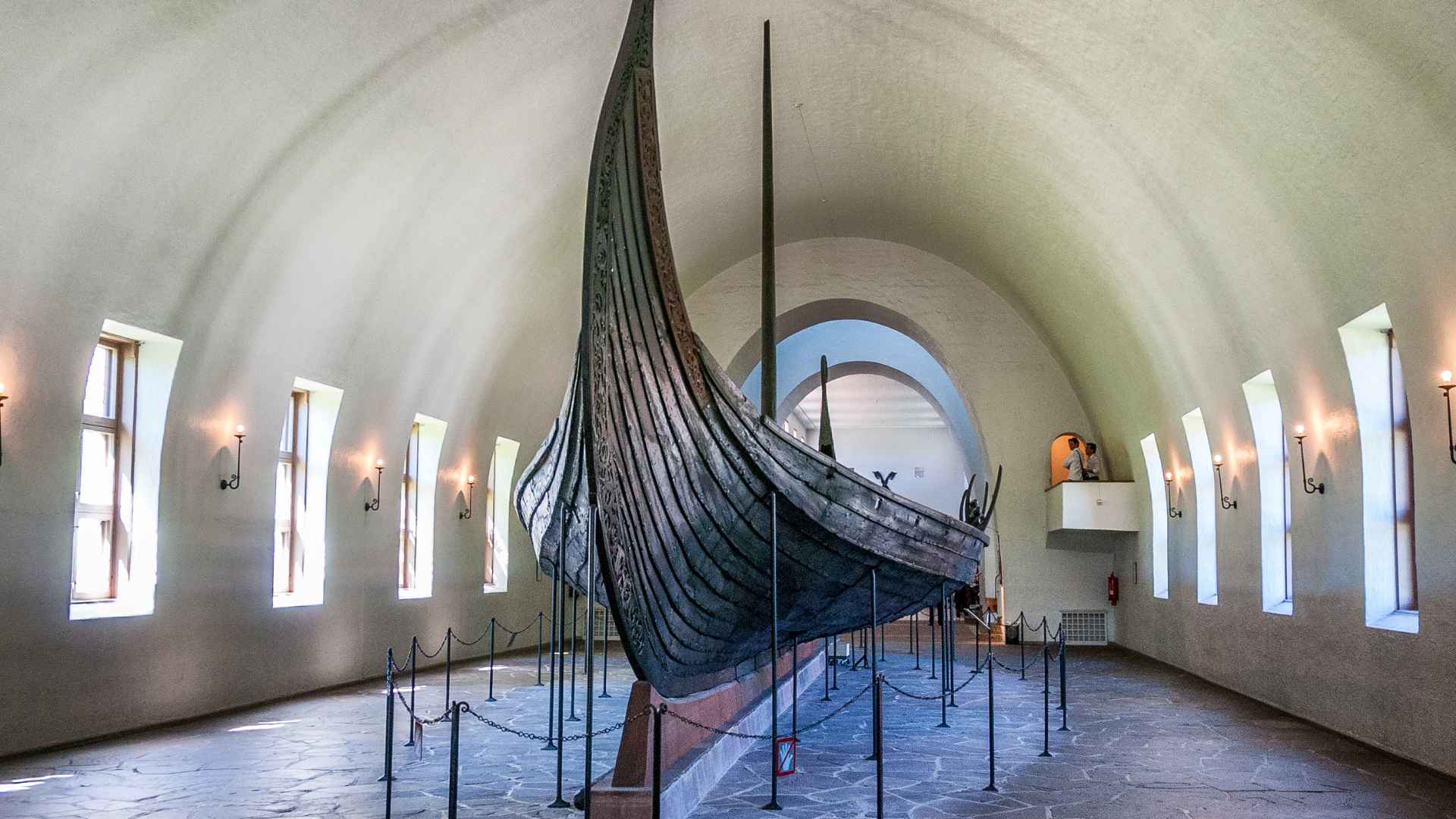
The Phoenicians: the maritime prowess of the Phoenicians and their role in spreading boat-building knowledge.
The Phoenicians were renowned for their maritime prowess and played a significant role in spreading boat-building knowledge throughout the ancient world. Hailing from the eastern Mediterranean, their seafaring skills and trade networks extended across the region.
Phoenician shipbuilders excelled in constructing sturdy and seaworthy vessels. They developed advanced techniques, including the use of mortise and tenon joints and wooden pegs, to build strong hulls. Their ships, such as the biremes and triremes, were propelled by both oars and sails, enabling them to navigate long distances efficiently.
The Phoenicians established extensive trade routes, reaching as far as Britain in the west and the Red Sea in the east. Through their maritime activities, they disseminated boat-building knowledge and techniques to other civilizations they encountered. This knowledge exchange contributed to the advancement of boat design and construction in the ancient world.
Greek and Roman vessels: technological advancements in boat design during the classical era, including triremes and galleys.
During the classical era, both the Greeks and Romans made significant technological advancements in boat design. The Greeks, in particular, developed renowned naval vessels such as triremes and galleys.
Triremes were warships propelled by three banks of oars on each side, giving them exceptional speed and maneuverability. These vessels featured a ram on the prow for ramming enemy ships during naval battles. The construction of triremes involved precise woodworking, internal bracing, and careful distribution of weight to ensure optimal performance.
Galleys, used for both warfare and trade, were longer vessels with multiple rows of oars and a large sail. The Romans, inspired by Greek shipbuilding techniques, adopted and further refined the design of galleys. They introduced advancements such as the “corvus,” a boarding bridge with a spike that could be dropped onto enemy ships, enhancing their naval tactics.
The technological advancements in boat design during the classical era revolutionized naval warfare and facilitated long-distance trade. These vessels not only influenced Mediterranean cultures but also inspired later civilizations in their boat-building endeavors.
Viking longships: Iconic longships of the Vikings, which played a crucial role in their explorations and raids.
The Vikings, known for their seafaring and exploration during the Viking Age (8th to 11th centuries CE), employed iconic longships that played a crucial role in their expeditions, raids, and trade activities.
Viking longships were sleek, shallow-drafted vessels with a symmetrical design and a flexible hull. They were propelled by both oars and sails, allowing the Vikings to navigate rivers, coastal waters, and even venture across the open seas. The longships’ shallow draft enabled them to navigate shallow waters and make landfall in areas unreachable by larger vessels.
These ships were not only instrumental in Viking raids but also served as tools for exploration, trade, and colonization. The Viking longships facilitated the exploration and settlement of regions such as Iceland, Greenland, and even parts of North America, leaving a lasting impact on the cultural and historical development of these areas.
The Viking longships showcased remarkable craftsmanship, with overlapping planks, clinker-built construction, and sophisticated rigging systems. They were designed to withstand challenging maritime conditions and provided the Vikings with a versatile and formidable means of transportation and exploration.
The innovations and advancements in boat design by ancient maritime cultures, such as the Phoenicians, Greeks, Romans, and Vikings, left an indelible mark on maritime history. These cultures pushed the boundaries of boat-building techniques, enabling them to navigate vast distances, engage in trade and exploration, and shape the course of human civilization.
Medieval and Renaissance Developments:
Arab dhow ships: Influence of Arab maritime culture and their development of the dhow ships, known for their lateen sails.
Arab maritime culture made significant contributions to boat design and navigation, particularly through the development of dhow ships. Dhows were sailing vessels characterized by their distinctive lateen sails, which allowed for efficient navigation against the prevailing winds.
Arab sailors and shipbuilders mastered the art of constructing dhows using indigenous materials such as teak wood. The hulls were built with a sewn plank technique, where planks were stitched together with coconut fiber or other natural fibers. This flexible construction method made the dhows resilient and capable of navigating shallow waters.
Dhows played a crucial role in Arab trade networks, facilitating maritime commerce across the Indian Ocean and the Red Sea. They were versatile vessels, capable of carrying goods, passengers, and even livestock. The lateen sails of dhows enabled them to navigate both coastal and open waters, making them ideal for long-distance travel and trade.
The influence of Arab maritime culture and the design of dhow ships spread throughout the Indian Ocean, influencing boat construction in regions such as East Africa, India, and Southeast Asia. Even today, the traditional design and sail plan of dhows continue to be used in certain parts of the world.
Chinese treasure ships: impressive fleet of Chinese treasure ships commanded by Admiral Zheng He during the Ming Dynasty.
During the Ming Dynasty in the 15th century, China witnessed a remarkable era of maritime exploration led by Admiral Zheng He. Zheng He commanded an impressive fleet of Chinese treasure ships, known as “baochuan,” which showcased remarkable advancements in shipbuilding for their time.
The treasure ships were colossal in size, with some estimates suggesting they could reach up to 400 feet in length. These massive ships featured multiple masts and were constructed using advanced techniques such as keel compartments for added stability and watertight bulkheads. The fleet was equipped with navigational instruments, advanced rigging systems, and carried a significant cargo capacity.
Zheng He’s treasure ships undertook seven major expeditions, exploring and establishing diplomatic relations with countries throughout Southeast Asia, the Indian Ocean, and even as far as East Africa. The voyages were instrumental in expanding Chinese influence, promoting trade, and fostering cultural exchange.
The treasure ships of Admiral Zheng He demonstrated China’s maritime capabilities and showcased its technological advancements in shipbuilding, navigation, and exploration. However, with the shift in political priorities, China subsequently curtailed its maritime expeditions, and the treasure ship fleet eventually fell into disuse.

European exploration vessels: Advancements in shipbuilding during the Age of Exploration, including caravels and galleons.
During the Age of Exploration, European nations made remarkable advancements in shipbuilding, enabling them to undertake ambitious voyages of discovery and trade.
Caravels were one such development that revolutionized European exploration. Caravels were small, highly maneuverable ships with a combination of square and lateen sails. They were equipped with rudders mounted at the stern, allowing for increased control and maneuverability. Caravels were the preferred vessels for explorers such as Christopher Columbus and Vasco da Gama, enabling them to venture into uncharted waters and reach distant lands.
Galleons were another notable development in European shipbuilding. These large, heavily armed vessels combined the maneuverability of caravels with the firepower of warships. Galleons were equipped with multiple decks and carried an impressive array of cannons, making them formidable ships of war and exploration. They played a pivotal role in European colonial expansion and trade during the 16th and 17th centuries.
The advancements in shipbuilding during the Age of Exploration allowed European nations to undertake ambitious voyages of discovery, colonization, and trade. These vessels facilitated the exploration of new lands, the establishment of global trade networks, and the reshaping of world history.
Overall, the medieval and Renaissance periods witnessed significant developments in boat design and construction, driven by Arab, Chinese, and European maritime cultures. These advancements expanded the possibilities of maritime exploration, trade, and cultural exchange, leaving a lasting impact on the course of human history.
Industrial Revolution and Modern Boats
Steam-powered ships: Revolutionary impact of steam-powered ships on transportation, trade, and warfare.
The advent of steam-powered ships during the Industrial Revolution brought about a revolutionary transformation in maritime transportation, trade, and warfare. Steam engines replaced wind and muscle power, allowing vessels to navigate more efficiently and reliably, regardless of wind conditions.
Steam-powered ships, such as paddle steamers and later screw-driven steamships, played a significant role in expanding global trade and transportation networks. They were not reliant on wind patterns, enabling them to travel along predetermined routes with greater speed and reliability. Steamships facilitated the transportation of goods and people across vast distances, connecting continents and fueling economic growth.
Steam-powered naval vessels also transformed warfare at sea. Ironclads, powered by steam engines and equipped with heavy armor and powerful artillery, revolutionized naval warfare during the mid-19th century. These ships rendered traditional wooden sailing vessels obsolete, changing the dynamics of naval conflicts and defense strategies.
The birth of leisure boating: Emergence of recreational boating and the introduction of pleasure craft.
As industrialization progressed and societies experienced greater prosperity, the emergence of leisure boating became possible. The introduction of recreational boating and pleasure craft marked a shift from boats primarily used for utilitarian purposes to vessels designed for enjoyment and leisure activities.
During the 19th century, yachting gained popularity among the wealthy. Elaborate sailboats and yachts were built for pleasure cruising and competitive sailing races. The Royal Yacht Squadron’s establishment in 1815 and the America’s Cup race in 1851 further popularized recreational boating, leading to the development of more sophisticated sailing yachts.
Modern maritime technology: Modern innovations in boat design, materials, and propulsion systems, including fiberglass hulls and outboard engines.
In the modern era, boat design, materials, and propulsion systems have undergone significant advancements, enhancing performance, safety, and efficiency.
Fiberglass, a lightweight and durable material, revolutionized boat construction in the mid-20th century. It replaced traditional wooden hulls, offering increased strength, reduced maintenance, and improved resistance to water damage. Fiberglass hulls allowed for the mass production of boats, making them more accessible to a wider range of enthusiasts.
Outboard engines, introduced in the early 20th century, have become a popular propulsion system for recreational boats. These portable engines mounted on the stern provide flexibility and ease of use. Outboard motors offer increased maneuverability, allowing boats to operate in shallower waters and navigate congested areas more effectively.
Advancements in navigation and communication technology, such as GPS systems and marine electronics, have greatly improved the safety and efficiency of modern boating. These technologies provide accurate positioning, real-time weather updates, and improved communication capabilities, making boating safer and more enjoyable.
In recent years, there has been a growing focus on eco-friendly boat designs and alternative propulsion systems. Electric boats, hybrid engines, and sustainable materials are being explored to reduce the environmental impact of boating and promote sustainable practices.
The Industrial Revolution and modern innovations in boat design, materials, and propulsion have transformed the maritime industry. From steam-powered ships revolutionizing transportation and warfare to the birth of leisure boating and the constant pursuit of technological advancements, boats continue to evolve, adapting to changing societal needs and technological possibilities.
Contemporary Boating Culture

Boating for pleasure and sport: Widespread popularity of recreational boating and the various activities associated with it.
Recreational boating has become a widespread and beloved activity around the world. Boaters take to the water for various purposes, including cruising, water skiing, wakeboarding, fishing, sailing, and simply enjoying the beauty of nature. Boating provides an escape from the daily grind, allowing people to relax, unwind, and connect with friends and family.
Boating has also given rise to a vibrant sports culture. Competitive events such as sailing regattas, powerboat races, fishing tournaments, and water skiing championships attract participants and enthusiasts from all walks of life. These events foster a sense of community, camaraderie, and healthy competition among boating enthusiasts.
Commercial and industrial applications: Role of boats in industries such as fishing, transportation, and offshore exploration.
Boats play a crucial role in various commercial and industrial sectors. Fishing boats are essential for the global fishing industry, supporting the livelihoods of millions of people and providing a vital source of food for populations around the world. Trawlers, longliners, and purse seiners are examples of boats used in commercial fishing, each designed for specific fishing methods and target species.
Transportation by boat remains crucial for the movement of goods and people in many regions. Ferries, cargo ships, and passenger liners facilitate transportation across rivers, lakes, and seas, connecting communities and enabling trade and tourism.
In offshore exploration, specialized vessels such as drilling rigs, supply boats, and research vessels support the oil and gas industry, scientific expeditions, and offshore renewable energy projects. These boats are equipped with advanced technology and capabilities to operate in challenging marine environments.
Environmental concerns and sustainability: Importance of responsible boating practices and efforts to protect marine ecosystems.
As boating continues to thrive, there is a growing recognition of the importance of responsible boating practices and environmental stewardship. Efforts are being made to minimize the impact of boating on marine ecosystems and preserve the health and beauty of our waters.
Boaters are encouraged to follow responsible boating practices, such as proper waste disposal, adherence to speed limits, and respecting protected areas. Education and awareness campaigns promote boater safety, the prevention of pollution, and the conservation of marine life.
Sustainable boating initiatives aim to reduce the environmental footprint of boats. This includes the adoption of eco-friendly technologies, such as electric propulsion systems, hybrid engines, and renewable energy sources. Boat manufacturers are incorporating sustainable materials and implementing eco-friendly manufacturing processes.
Furthermore, conservation organizations and governmental agencies work together to establish marine protected areas, regulate fishing practices, and implement policies to safeguard fragile ecosystems.
By promoting responsible boating practices and supporting sustainable initiatives, boaters and industry stakeholders can contribute to the preservation of marine environments, ensuring that future generations can continue to enjoy the beauty and benefits of our oceans, rivers, and lakes.
In conclusion, contemporary boating culture encompasses recreational pursuits, commercial applications, and a growing emphasis on environmental responsibility. Boating provides opportunities for leisure, sport, and industry, while also highlighting the need for sustainable practices to protect our precious marine ecosystems.
Watch Evolution of sea travel – ships from 4000 BC to present | Video
When were boats first invented?
Boats have been used for thousands of years. The earliest known evidence of boats dates back to around 10,000 BCE in the form of carved wooden canoes discovered in the Netherlands. However, it is likely that boats were used even earlier, possibly as far back as the Stone Age.
What were the earliest types of boats?
The earliest boats were likely simple dugout canoes made by hollowing out a single tree trunk. These canoes were used by ancient civilizations worldwide for fishing, transportation, and exploration. Another early type of boat was the coracle, which was constructed by stretching animal hides or bark over a wooden frame.
How did boats impact human history?
Boats played a crucial role in human history by enabling exploration, trade, and the development of civilizations. They allowed people to travel across bodies of water, opening up new opportunities for migration, colonization, and the exchange of goods and ideas. Boats were also essential for fishing, hunting, and warfare, shaping the course of human civilization.
How did boat technology evolve over time?
Boat technology has evolved significantly throughout history. From the simple dugout canoes and coracles, humans progressed to more sophisticated designs. This included the development of keels, sails, and rudders, allowing for more efficient navigation and control. In the modern era, boats have seen advancements in propulsion, such as steam engines, internal combustion engines, and electric motors, as well as the use of advanced materials and navigational aids.
What were some famous historical boats?
The Egyptian reed boats, known as papyrus boats, were used on the Nile River during ancient times. The most famous example is the funerary boat of Pharaoh Khufu, discovered near the Great Pyramid of Giza.
The Viking longships were used by the Norse seafarers during the Viking Age. These versatile ships were renowned for their speed and played a significant role in the Viking exploration and raids across Europe.
The Spanish caravels, such as the Santa Maria, Niña, and Pinta, were the ships Christopher Columbus used during his famous voyage in 1492, leading to the discovery of the Americas.
Conclusion
Throughout history, boats have played a pivotal role in the progress of human civilization, leaving a lasting impact on various aspects of our lives. From the humble beginnings of primitive watercraft made from logs and reeds to the technological marvels of modern vessels, the evolution of boats has been a remarkable journey.
We explored the origins of boats, witnessing the ingenuity of prehistoric societies as they utilized nature’s resources to navigate the waters. The advancements made by ancient river civilizations like the Egyptians and Mesopotamians opened up new possibilities for trade and exploration along the great waterways of the world.
The seafaring civilizations of the Phoenicians, Greeks, and Romans showcased the prowess of maritime cultures and expanded the horizons of human knowledge. The iconic longships of the Vikings instilled both fear and fascination, as they embarked on daring voyages of exploration and conquest.
The medieval and Renaissance periods witnessed the influence of Arab maritime culture, the grand expeditions of Admiral Zheng He’s Chinese treasure ships, and the European voyages of exploration that shaped the modern world. These milestones brought about cultural exchange, trade, and the establishment of global networks that endure to this day.
The Industrial Revolution ushered in an era of steam-powered ships, revolutionizing transportation, trade, and warfare. Leisure boating emerged, providing a source of pleasure and recreation for people of all walks of life. The continued innovations in boat design, materials, and propulsion systems have propelled us into the modern era, where boats have become indispensable in industries such as fishing, transportation, and offshore exploration.
Yet, as we embrace the possibilities that boats offer, we must also be mindful of our impact on the environment. Responsible boating practices and sustainable initiatives are essential to protect our marine ecosystems and ensure the longevity of our oceans, lakes, and rivers.
In closing, the allure of boats remains as strong as ever. They evoke a sense of adventure, freedom, and connection to our maritime heritage. The history of boats reminds us of the indomitable spirit of exploration, the power of trade and cultural exchange, and the joy of leisure and recreation. Let us continue to appreciate and celebrate the rich legacy of boats, while charting new courses towards a sustainable and vibrant future on the water.
Share The Evolution of Boats Over Time: A Journey Through History with your friends and Leave a comment below with your thoughts.
Read Buying a Boat in Europe After Brexit: Things You Should Know until we meet in the next article.
